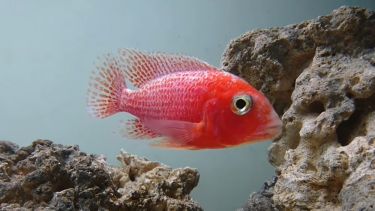Spelling How We Want To
Orthography. The conventional spelling system of a language. I know I have devoted two blogs already to this, and yes, this is a third - albeit a shorter one - but come on… Why is there not a linguistics module called Orthographies yet?
Anyway, showing you how silly English orthography is, and briefly why, I now turn to a bit of silliness that can be had with English and its spelling drawing, from a conversation I had with one of my lecturers. And it’s this…
GHOTI
How do you say that word above? Well based on my last article regarding words being spelt as their writer saw fit, it could have an array of different answers. But there is one that I have in mind and it is /fɪʃ/ – I have used the international phonetic alphabet again, and yes, I mean the aquatic animals, or <fish> as the word is usually written. I’m going to explain how it’s said, but firstly, you may have noticed my use of angle brackets. This is because, in linguistics, there are units to writing systems (or orthographies) known as graphemes, and we represent graphemes in angle brackets like <t>, <fish>, or <GHOTI>.
First, we must count the number of phonemes – these are the smallest, distinct units of a given language that can be perceived to change the meaning of the word, so, /p/ and /b/ are phonemes in English as /pat/ and /bat/ have two different meanings, but they may well be the same phoneme in another language – which is known as an allophone. In /f ɪ ʃ/, there are three phonemes; /f/, /ɪ/, and /ʃ/. The next thing to do is to count as many orthographic variations, or graphemes, as possible that are present within the English language for these particular phonemes.
- /f/ has at least four variations and can be represented by <f> in <fish>, <ff> in <stuff>, <lf> in <half>, and <gh> in <rough>.
- /ɪ/ has at least five variations and can be represented by <i> in <fish>, <o> in <women>, <e> in <women>, <y> in <hymn>, <ei> in <counterfeit>.
- /ʃ/ has at least six variations and can be represented by <sh> and/or <shi> in <cushion>, <che> in cache, <ch> in <machine>, <t> and/or <ti> in <station>.
- Note: This data is based on generalised British accents and may be different depending upon your accent.
This means there are 4x5x6 possible ways within the confines of English orthographies to spell the word <fish>. That’s 120 variants! I apologise for the outburst of maths on a School of English blog; I did want it to sound impressive though. It is worth mentioning there are some weak rules that can determine why other spellings are more preferable. The vowel is a short vowel and corresponding graphemes tend to be shorter for short vowels as well, so an <ei> is rarer for these – but then again, may not be. A useless <e> may appear after the <ch> which could be described as ‘magic e’ where the grapheme for the short vowel becomes an elongated phoneme, or then again, it could just be a silent <e>. There’s also <i> after <t> and <sh> which is less common at word beginnings, but <-tion> is everywhere at the end of the words. More complications continue to arise, so it really is no wonder they spelt however they wanted all those years ago.
For now, we can forget these rules and make our own concatenations of graphemes that spell ‘fish’ to get <ghoti>, though we could have a few other strange examples such as <lfet>, <ghyshi>, and even <ffeich>. Although these may all have entirely different pronunciations due to bad spelling rules such as /gɪshiː/ or ‘giss-hee’ for <ghyshi> and /fɪəʧ/ or ‘fear-tch’ for <ffeich>. It’s worth noting that, even though I did not use the angle brackets and normal linguistic convention, we still get an impressive amount of info from practically irrelevant strings of graphemes. Out of all of them, <ghoti> is the oddest, as this has three letters that could well be silent, <gh> and <t> if you look at gnarl, ghost and beret. This means that are now way more variants possible as we get a whole load of silent letters to chuck in to make English orthography all the more intricate. We should all probably just stick to <fish> if we want to be better understood.
All this raises another question about English, why can two, or possibly even three letters represent a single sound? Don’t we have an alphabet for a reason? These are digraphs and trigraphs respectively, and I’ll talk about them next.
Written by DP, Digital Student Ambassador.

